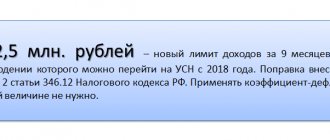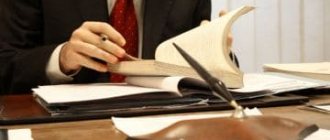Recycling fee concept
The tax payable upon purchasing a car was introduced in 2012. It is established by paragraph 1 of Article 24-1 of the Federal Law of June 24, 1998 (as amended on July 28, 2012) No. 89. It is a one-time payment paid by car buyers. The money is sent to the country's budget. It is assumed that they will be used for environmental needs. In particular, for car recycling, which is required to maintain a favorable environmental situation.
The fee is paid in accordance with paragraph 3 of Article 24-1 of Federal Law No. 89 under these circumstances:
- When importing a vehicle from another state.
- When purchasing a vehicle from a person who has not paid the recycling fee for various reasons: exemption from payments, dishonesty.
The fee must be paid either by the vehicle manufacturer or the buyer.
Who can avoid paying the recycling fee?
Let's consider the circumstances under which a person is exempt from paying the fee:
- The service life of the car is more than 30 years. At the same time, exemption from the fee is relevant only if the following circumstances are met: the car is not used for commercial purposes, spare parts (body, engine) for the vehicle are original.
- The vehicle belongs to diplomatic missions, consulates, and international structures. Exemption from fees applies to all employees of these entities.
- The vehicle is imported into the Russian Federation as personal property by people participating in the program for relocating Russians from abroad.
IMPORTANT! If representatives of the last two categories sell cars, the DC is paid by the buyers of the vehicle.
How to pay the recycling fee for special equipment
Clause 3 of Article 24.1 of the Federal Law of the Russian Federation “On Production and Consumption Waste” defines 2 collectors of the disposal fee:
- Federal Customs Service - when importing special equipment into Russian territory from other countries;
- Federal Tax Service - from manufacturers operating in Russia, as well as persons who bought special equipment here from sellers who did not pay the tax.
The legislation obliges the payer to submit the necessary documents and transfer money to the Federal Treasury account using the codes:
- 182 1 1200 120 - for self-propelled vehicles, trailers produced in the Russian Federation;
- 182 1 1200 120 - for wheeled vehicles.
How is the recycling fee calculated?
The DC is calculated using this formula:
CS = BS * K
Where:
- US – fee amount;
- BS – base rate;
- K is the coefficient used, which is determined on the basis of the List of CM sizes established by Government Decree No. 81 dated 02/06/2016.
There are only two bets:
- 20 thousand rubles for passenger cars that are not used in commercial activities.
- 150 thousand rubles for trucks, buses, as well as passenger vehicles that are used in commercial activities.
The coefficients are set by law. There are many of them, and they are determined based on the following factors:
- Dimensions.
- Weight.
- Engine capacity.
For example, the coefficient for a passenger car older than three years weighing less than 2.5 tons will be 0.88. This is the value that will be used in the calculations.
Calculation example
An imported bulldozer (weighing no more than 10 tons) with a service life of less than 3 years was purchased. The base rate will be 150,000 rubles, since special equipment will be used for commercial purposes. The coefficient for a car of the type in question is 4. The following calculations are made:
150,000 * 4 = 600,000 rubles.
This is the amount that will need to be paid when importing a car of the type in question from abroad.
Legislative acts
The main document regulating the procedure for collecting recycling fees for transport is Decree of the Government of the Russian Federation No. 870 of 08.30.12. It is this document that regulates the procedure for calculating the fee, the mechanism for its payment, determines the circle of entities that are recognized as payers of the fee, and also describes the situations in which the payment must be transferred to the budget.
The Government Decree “On Recycling Collection” states:
- list of vehicles that are recognized as objects of taxation;
- cases in which a fee is charged;
- rates and coefficients for calculating the fee;
- fee payers;
- conditions under which the fee is not charged.
In addition to the main document, the Government has adopted regulations governing the rules for calculating and paying fees in relation to wheeled, self-propelled vehicles, trailers and semi-trailers and other equipment. Also, when calculating the recycling fee, you should also rely on the norms of the Tax Code, as well as the explanations given in the letters of the Ministry of Finance and the Federal Tax Service.
Where should I pay the tax when importing a car from abroad?
If the payment is made when importing a car from another state, the funds are collected by the Federal Customs Service. Payments must be made within the customs clearance period. You will also need to pay a recycling fee. In order to do all this, you need to come to the customs office at your place of residence. You need to take the following documents with you:
- Recycling fee calculation form (must be completely completed).
- PTS for the car for which payments are made.
- Copies of papers that confirm the compliance of the machine’s characteristics with the data specified in the calculation (for example, a certificate of conformity, relevant expert opinions, accompanying documents).
- Vehicle purchase and sale agreement.
- Payment documents confirming payments.
- If a trusted person is involved in the procedure, a power of attorney will be required for him. After providing all these documents, specialists check the accuracy of the calculations performed, the authenticity of the papers, and payments to the FC account. After this, a mark is placed in the PTS about the payment of the recycling fee.
IMPORTANT! Bank details for transferring funds are posted on the FCS website.
Title page
On the title page, the payer fills in all the details, except for the section “To be filled out by a tax authority employee.”
When filling out the “Adjustment number” , “0” is automatically entered in the primary calculation; in the updated calculation, you must indicate the adjustment number (for example, “1”, “2”, etc.).
Each corrective calculation must contain the data of sections 1 and 2 of all previously submitted calculations relating to one date of preparation (payer indicator – “2”) or one quarter of the reporting year (payer indicator – “1”).
In the “Payer Attribute” , select the appropriate code:
- “1” – largest – other manufacturer.
The fields “Quarter of calculation (code)” and “Reporting year” are filled in only by the largest manufacturers of self-propelled equipment (payer indicator – “1”).
The field “Date of calculation” is filled in by other payers (payer attribute is “2”).
When filling out the “Submitted to the tax authority (code)” , the code of the tax authority to which the calculation is submitted is reflected. It is selected from the directory. By default, the field is automatically filled with the code that was specified when the client registered in the system.
In the field “At location (accounting) (code)”, select the code of the place where the payment is submitted by the payer from the corresponding directory. Thus, Russian organizations choose the code “210”, individual entrepreneurs – “120”, etc.
In the field “Fee Payer” the name of the organization is indicated in accordance with the constituent documents. Individual entrepreneurs and other citizens indicate their full (without abbreviations) last name, first name, patronymic (if any).
When filling out the “Contact phone number” , the payer’s phone number specified during registration is automatically reflected.
The field “On ____ pages” indicates the number of pages on which the calculation was compiled. The field value is filled in automatically and recalculated when the composition of the calculation changes (adding/deleting sections).
When filling out the field “with supporting documents or their copies on ___ sheets”, the number of sheets of supporting documents and (or) their copies (if any) is reflected. Such documents are the original (or a certified copy) of a power of attorney confirming the authority of the representative of the fee payer, vehicle passports, copies of payment documents confirming payment of the fee, etc.
In the section of the title page “I confirm the accuracy and completeness of the information specified in this calculation:” the following is indicated:
- 1 - if the document is presented by the payer,
- 2 - if the document is submitted by a representative of the payer.
In this case, the name of the payer or representative, as well as a document confirming his authority, is indicated.
The date is also automatically indicated on the title page.
Where should I pay the fee when purchasing a car without a mark in the title?
In the vast majority of cases, the recycling fee is paid by the manufacturer. The buyer transfers money only if he imports a car from abroad or the fee on the vehicle has not been paid by the previous owner. In the second case, payments are made to the Federal Tax Service. You need to go to the official website of the Federal Tax Service and find the appropriate section on fees. In it you can:
- Find out budget classification codes.
- Complete the calculation of the CS in the prescribed form.
- Make an appointment at your local Federal Tax Service.
Details for payment to the Federal Tax Service can also be found on the official website of the tax office. After payment of the fee has been made, you need to visit the tax office with these papers:
- US calculation form (completed).
- Title certificate for the car for which the fee is paid.
- Documents confirming the purchase of the car, and all other papers specified in the previous section.
FOR YOUR INFORMATION! The fee will also have to be paid to persons who assembled the car themselves. In this case, copies of the vehicle title that was used in the design of the new car are provided to the Federal Tax Service.
A note in the PTS about payment of the recycling fee
After payment of the fee, the corresponding mark is placed in the PTS. You need to pay attention to it both after making a payment and when purchasing a car. A mark is placed in the “special notes” section of the PTS. Differs in red color. Why is its presence so important? The mark indicates that the fee has been paid and there is no need to pay it again. She can only be absent if the following circumstances exist:
- PTS for a domestic car was issued before September 1, 2012.
- Imported cars were imported into the Russian Federation before September 1, 2012.
In both cases, no fee needs to be paid. For this reason, the absence of a mark should not be alarming.
Liability for non-payment of fees
Failure to pay the recycling fee in itself does not entail any sanctions. Even fines are not applied to violators. However, this does not mean that ignoring the law will go unpunished. A car that does not have a red mark on its title cannot be registered. In turn, for vehicles that are not registered (Article 12.1 of the Code of Administrative Offenses of the Russian Federation), a fine is imposed:
- 500-800 rubles – first violation.
- Up to 5,000 rubles or deprivation of a driver’s license for up to 3 months – repeated violations.
For this reason, it is more profitable to pay the fee.
What should I do if the fee is paid in a larger amount?
In this case, a request for a refund will be left. It is sent to the authority where the tax was paid. In addition to the document, you must provide the following documents:
- Payment documents evidencing payment of the fee.
- Confirmation that the fee was paid in excess (for example, the difference between the calculation carried out and the amount indicated in the payment order).
- The application is reviewed within a month. After this, a decision is made. If the authorized body refuses to return, the refusal must be justified.
ATTENTION! You can apply for a refund of the overpaid amount within three years from the date of payment. However, this is best done faster, since the funds are not indexed. That is, after three years they will be issued in the same amount as they were paid. It is very likely that inflation will “eat up” a large amount of money.
Most legal entities and individuals do not face the need to pay the tax. However, if it does occur, you need to figure out the order in which funds are transferred. There are many nuances. In some circumstances, funds are transferred to one authorized body, in others - to another. After making payments, you must save the payment document. He will confirm the fact and amount of payment, if required.






